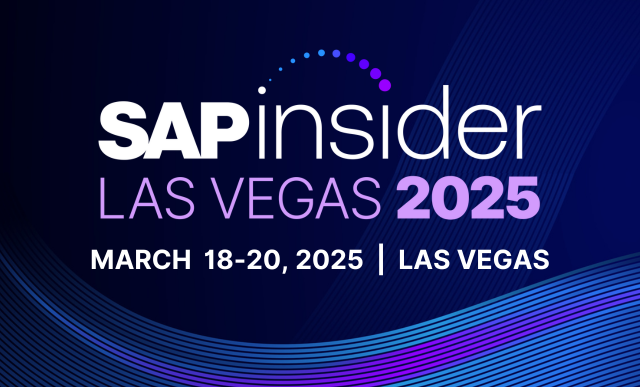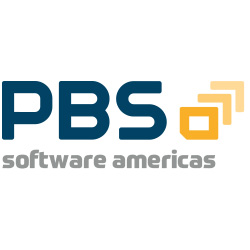SAP MM
Filter By
Browse By
- SAP Analytics and AI
- SAP Application Development and Integration
- All SAP Application Development and Integration
- SAP ABAP
- SAP ABAP Development Tools
- SAP ABAP Test Cockpit
- SAP API Management
- SAP BAPI
- SAP Basis
- SAP BRF
- SAP Business Application Studio
- SAP CMS
- SAP Design Studio
- SAP Development Tools
- SAP DevOps
- SAP EAI
- SAP EDI
- SAP Extension Suite
- SAP Fiori
- SAP Fiori Elements
- SAP Integration Suite
- SAP Low Code Application Development
- SAP Low Code Automation
- SAP Netweaver
- SAP Release Management
- SAP UI5
- SAP Web Application Server
- SAP Web IDE
- SAP Business Process Management
- SAP Center of Excellence
- SAP CIO
- SAP Customer Experience
- SAP Data and Data Management
- All SAP Data and Data Management
- SAP BW
- SAP BW/4HANA
- SAP Crystal Reports
- SAP Data Archiving
- SAP Data Center
- SAP Data Governance
- SAP Data Integration
- SAP Data Migration
- SAP Data Quality
- SAP Data Services
- SAP Data Strategy
- SAP Data Visualization
- SAP Data Warehouse Cloud
- SAP DMS
- SAP Document Control
- SAP EIM
- SAP ETL
- SAP ETL Tools
- SAP HANA
- SAP HANA Administration
- SAP HANA Deployment Infrastructure
- SAP HANA Studio
- SAP Master Data
- SAP Master Data Governance
- SAP MDM
- SAP Enterprise Architect
- SAP Enterprise Asset Management
- SAP ERP
- SAP Finance
- All SAP Finance
- SAP Accounting
- SAP AR AP
- SAP Asset Accounting
- SAP Billing Systems
- SAP BPC
- SAP BRIM
- SAP Cash Management
- SAP Central Finance
- SAP Controlling
- SAP COPA
- SAP Cost Center Accounting
- SAP e-invoicing
- SAP FICO
- SAP Finance Automation
- SAP Financial Closing Cockpit
- SAP Financial Consolidation
- SAP Financial Planning
- SAP FX Risk
- SAP General Ledger
- SAP Global Tax Management
- SAP Hyperion
- SAP Order to Cash
- SAP Payment Processing
- SAP Profitability Analysis
- SAP Rebate Management
- SAP S/4HANA Finance
- SAP Universal Journal
- SAP Governance Risk and Compliance
- SAP Human Capital Management
- SAP Intelligent Technologies
- SAP Platform and Technology
- All SAP Platform and Technology
- SAP Business Technology Platform
- SAP Cloud Connector
- SAP Cloud Integration Platform
- SAP Cloud Migration
- SAP Cloud Platform
- SAP Cloud Providers
- SAP Cloud Strategy
- SAP Container Platform
- SAP Digital Asset Management
- SAP Digital Integration Hub
- SAP Digital Signature
- SAP HANA Enterprise Cloud
- SAP HEC
- SAP Hyperscalers
- SAP Infrastructure
- SAP Messaging
- SAP Smart Forms
- SAP Quality and Testing
- SAP Security
- SAP Spend Management
- SAP Supply Chain Management
- All SAP Supply Chain Management
- SAP APO
- SAP Asset Management
- SAP Business Network
- SAP Digital Manufacturing Cloud
- SAP Digital Twin
- SAP EWM
- SAP IBP
- SAP Inventory Management
- SAP Label Printing
- SAP Logistics
- SAP Manufacturing
- SAP Manufacturing Automation
- SAP MES
- SAP MII
- SAP MM
- SAP MRO
- SAP MRP
- SAP Order Management
- SAP Plant Maintenance
- SAP PLM
- SAP Production Planning
- SAP S&OP
- SAP SD
- SAP SPM
- SAP Supply Chain Planning
- SAP Track and Trace
- SAP Transportation Management
- SAP System Administration
Supply Chain Management: SAP MM
Customers need companies to deliver what is offered. Thus, organizations need to make sure materials are always kept in proper quantities and without shortages or gaps in the supply chain. One way an organization can easily meet its business demands is with the help of SAP.
What Is SAP MM?
SAP Materials Management (MM) module is an SAP ERP component that helps organizations with materials management, inventory management, and warehousing. It is one of the most important modules of SAP ERP because it supports procurement and inventory management for day-to-day operations. An organizational master data structure of plant, valuation area, storage location, purchasing organizations, and purchasing groups supports basic transactions.
Supply Chain Management: SAP MM
Customers need companies to deliver what is offered. Thus, organizations need to make sure materials are always kept in proper quantities and without shortages or gaps in the supply chain. One way an organization can easily meet its business demands is with the help of SAP.
What Is SAP MM?
SAP Materials Management (MM) module is an SAP ERP component that helps organizations with materials management, inventory management, and warehousing. It is one of the most important modules of SAP ERP because it supports procurement and inventory management for day-to-day operations. An organizational master data structure of plant, valuation area, storage location, purchasing organizations, and purchasing groups supports basic transactions.
Key capabilities include:
- Material management
- Procurement process management
- Master data management
- Inventory management
- Material requirements planning
- Invoice verification
Master data is the foundation for all transactions within SAP MM. It has two important components — material and vendor. Creating solid master data is the key to reducing repetitive work and minimizing errors. Some examples of master data are material master, service master, vendor master, purchasing info record, source lists, and quotas.
Advantages of SAP MM:
- Minimizes the cost of operations
- Reduces inventory losses
- Activities lead to a smoother and efficient process
Mitigate your risks by:
- Tracking the data
- Increase your sales
- Stock balancing
- Promote the products to help move inventory
- Offer customer discounts to help move inventory
It is important to note that with SAP S/4HANA and SAP MM, there are several functionalities that have changed. In SAP S/4HANA, the Material Ledger function is mandatory to support flexible valuation methods in multiple currencies. Post Goods Receipt against the Inbound Delivery is a feature of the SAP Fiori app. It has ability to search by Inbound Delivery and other attributes. The Fiori app allows for a better user experience, improved performance, and less load on databases.
Further Insights for SAPinsiders
- How to Create a Global Template to Configure SAP MM Processes in Implementations and Rollouts. S. Baraneedharan, an SAP Consulting Expert, explains the steps involved in creating a template for configuring an SAP materials management (MM) process.
- Improve Current Forecast Models in SAP MM. Gaetano Altavilla, Associate Professor of Economic Policy at the University of Naples, shares in his article how to improve your forecast accuracy by placing weights on individual forecasts. It also explores the idea of combining forecasting models.
- Understanding the Key Aspect of Supply Chain Visibility. Kumar Singh, SAPinsider Research Director, describes supply chain visibility, how organizations struggle achieving it, and one method to kickstart your approach.
10306 results
-

 Premium
Premium
A Three-Step Process for Averting Downtime When Modifying Your R/3 System
Reading time: 2 mins
/Project Management Whether your SAP system is still in its settling-in phase, or is one that has been firmly entrenched for years, ushering in new changes is a nontrivial challenge. Even small, seemingly innocuous changes, like rearranging a screen, introducing new headings on a report, or revising your backup practices can introduce downtime. Large or...…
-

 Premium
Premium
Destination and Session Management for the SAP DCOM Connector
Reading time: 2 mins
The SAP DCOM Connector (SDC) is the standard middleware for Windows applications that require access to SAP functionality. SDC contains an API that offers access to the “destinations” in which R/3 system and user information required for logon is maintained. This article provides an overview of those destinations and the SDC API that enables a...…
-

 Premium
Premium
Paving the Way for a Smooth and Successful Integration of Your EDI and SAP Systems
Reading time: 1 mins
/Project Management SAP professionals are finding that the integration of SAP and EDI systems is fundamental to many of the e-commerce applications they are being asked to support. All too often, however, SAP teams do not have a working knowledge of their organization’s in-house EDI subsystem, and vice versa. This article aims to bridge that...…
-
-

 Premium
Premium
BAPI Programming with Java — Beyond the Basics
Reading time: 2 mins
SAP’s Common RFC Interface for Java has made it easier for customers to adopt the “outside-in” approach, whereby Java programs running on non-SAP systems can make BAPI calls into an R/3 system to leverage R/3 functionality. Working with Java middleware for SAP R/3 is a somewhat complex affair. This article outlines some of the nasty...…
-

 Premium
Premium
Better Management of Change Requests with Extended Transport Control
Reading time: 1 mins
Every implementation and development team instinctively knows that the transporting of change requests is vital to the success of an R/3 implementation. Recognizing that this process can become overwhelming, SAP introduced extended transport control with Release 4.5, so once you define client-specific transport routes, you don’t have to worry about managing into which clients a...…
-

 Premium
Premium
Building Your Own BAPIs — A Step-by-Step Guide
Reading time: 1 mins
If you have some experience with crafting applications that utilize BAPIs and want to know how to actually create and implement a BAPI in the event that an appropriate BAPI does not exist, this article is for you. Once you have searched through the BOR and identified the suitable object types for your application, and...…
-

 Premium
Premium
A Custom Performance Test — Is It for You?
Reading time: 1 mins
A load test makes sense — in fact, it’s an absolute must — for large, complex, or highly customized systems with add-ons. In these situations, a load test, whereby you physically test a heavily loaded system before it is deployed, is the only way to verify that the hardware sizing, configuration, and parameterization of your...…
-
-

 Premium
Premium
Optimizing, Monitoring, and Fine-Tuning a Newly Upgraded Release 4.x Spool Service
Reading time: 1 mins
For Release 3.x spool servers, all output requests and related management activities are anchored by a single spool work process. Needless to say, processing bottlenecks can be a common occurrence, forcing administrators to add additional R/3 servers just to get more spool work processes. Release 4.x spool servers, which can support multiple spool work processes,...…
-

 Premium
Premium
Selecting the Optimal System Landscape for Your SAP R/3 Upgrade Project
Reading time: 1 mins
An R/3 upgrade requires that changes be made to the new system, and it requires support for ongoing changes to the production system as well, so the underlying system landscape must make it easy to manage change. Most upgrade projects use a variation on one of two landscape strategies: rehearsal of the upgrade process on...…
-

 Premium
Premium
Transaction Handling in SAP R3 What Every Programmer Needs to Know
Reading time: 1 mins
Understanding how R/3 is able to handle even very large numbers of transactions with ease is essential for any ABAP or BAPI developer who wants to build performance-optimized applications, and for administrators who are charged with maintaining overall system performance. This article explains the details of transaction processing and the asynchronous update scheme around which...…
Featured Insiders
-

-

Marc Hoppe
Manager SCM, SAP Deutschland Gmbh & Co KG
-

Marie-Luise Wagener-Kirchner
Vice President, Product Management Finance and Risk – GRC Solutions
Become a Member
Unlimited access to thousands of resources for SAP-specific expertise that can only be found here.
Become a Partner
Access exclusive SAP insights, expert marketing strategies, and high-value services including research reports, webinars, and buyers' guides, all designed to boost your campaign ROI by up to 50% within the SAP ecosystem.
Upcoming Events
Related Vendors
Your request has been successfully sent


